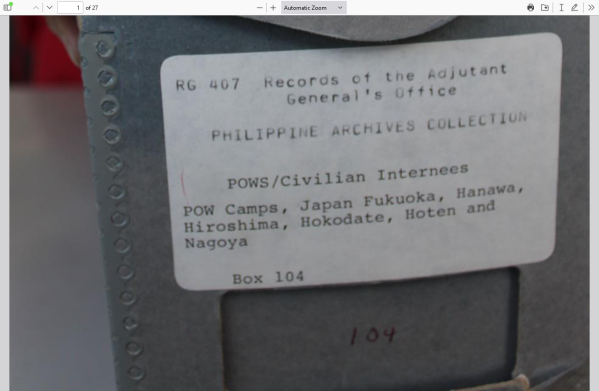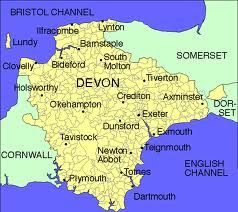
In my last story, https://genealogyensemble.com/2023/06/07/harrys-story/ I wrote about Harry Jolliffe and his trials and tribulations in a Prisoner of War Camp in Japan.
Relating this to my husband, John, he mentioned a memory of his maternal Uncle Ben and his Uncles’ time as a POW in Japan.
It was all second-hand because Benjamin Ronald Hughes died the year my husband was born, in 1948. However, John did have stories from his Mum, about her brother. According to her Uncle Ben suffered terribly during his 3 years as a prisoner.
Ben was born on the 27th of March 1910 the only boy in the family of six in the Toxteth area of Liverpool, Lancashire. His occupation was a messenger. That could have been for the Post Office delivering telegrams or perhaps riding a bicycle delivering groceries and goods.
When Uncle Ben was 15 years old, he joined the Royal Navy as a second-class boy entrant. When he reached 18 years old, in 1929 he was by then a Boy First Class and volunteered again, as an adult Able Seaman, and was posted to HMS Egmont II on 25 September 1931.
During his service, Uncle Ben served on 15 various Royal Navy ships. War was declared on the 1st of September 1939. On the 1st of March 1942, after three years of fighting, Uncle Ben was reported missing to his family. He was listed as a prisoner of war, by the Japanese. When captured and according to his Japanese POW file below, he was on HMS Encounter which had picked up allies from Malaysia and was scuttled (sunk) by her own crew, after being damaged by gunfire from heavy Japanese heavy cruisers in the Java Sea. (1)
Whilst researching I managed to find Ben’s Japanese POW information. There was not much on it, and I don’t read Japanese. I wanted to find the name of his camp and what he would have laboured at.

Eventually, I found that he was a POW in Fukuoka- Camp 26 prisoner number 51. The link (2) lists all the prisoners with information on nationality, name, age, and home address. it does make for interesting reading. There were British, Australian and two Dutch prisoners. The servicemen listed were Royal Navy and Army. ALL the men apart from eleven who had obvious illnesses, were listed as ‘Healthy’. The camp prisoners were used for labour in mines in this particular area of Japan.
The first pages of prisoners’ information.




At the war’s end, in 945, Uncle Ben was in the Royal Naval Hospital Chatham, in Kent. It states on his Service Record that he was Invalided out of the Royal Navy from RN Hospital Chatham on the 7th of August 1946. He would have spent time recovering from his terrible experiences.
He was granted a war gratuity and a medal. Later, on the 25th of January 1946. Benjamin Ronald Hughes is ‘Mentioned in Dispatches in the London Gazette. It reads as follows.

“Able Seaman. Benjamin Ronald HUGHES, C/J. 114923.
For bravery, endurance and marked devotion to duty whilst serving in H.M> ships Kuda, Isis, Scorpion and Sultan and H.M. M. MXS, 310 and 1062 during the withdrawal of troops from Sungai Punggor and in the harassing of the advancing Japanese in Malay, December 1941 – January 1942“.
My mother-in-law told her son John, that when Uncle Ben returned to his home in Liverpool he was a wreck. Emaciated, haunted, ill and looking twice his age. He was 36 years old. Uncle Ben did not live long to enjoy life and died in 1948 at the age of 38. Because of his young age, a Post Mortem was performed and he was found to have died of bacterial endocarditis. RIP Uncle Ben.
This ‘Ghost’ photo of Ben with his wife, Jessie, is the only photo we have.

(1) https://uboat.net/allies/warships/ship/4378.html
(2) http://www.mansell.com/pow_resources/camplists/fukuoka/fuk_26_keisen/FUK-26_Rosters_1946-02-16.pdf
NOTES
Keisen Yoshikuma Coal Mine Branch Camp (Fukuoka 26-B) Established as Fukuoka No.26 Branch Camp at Yoshikuma Coal Mine in Keisen-cho, Kaho-gun, Fukuoka Prefecture on May 10, 1945.
The POWs were used for mine labour by Aso Mining Company. The son and heir Taro Aso was a past President of Japan in 2008 and the controversy surrounding his family’s use of Korean and Allied POW labour clouded his term of office.
https://en.wikipedia.org/wiki/Aso_Mining_forced_labor_controversy
During the “White Rice Period”, lasting from January to October 1942, Allied prisoners were granted a maximum of ten ounces of rice per day, in addition to two ounces of rancid pork and four ounces of fish monthly. This official figure was often larger than that provided, with theft by Japanese soldiers, themselves suffering from starvation towards the latter days of the war, commonplace within the camps. Red Cross parcels, containing necessary essentials, were accepted by the Japanese authorities, but rather than being redistributed among the prisoners were kept by the Japanese soldiers themselves.
https://historycollection.com/20-horrific-details-about-japanese-pow-camps-during-world-war-ii/



















